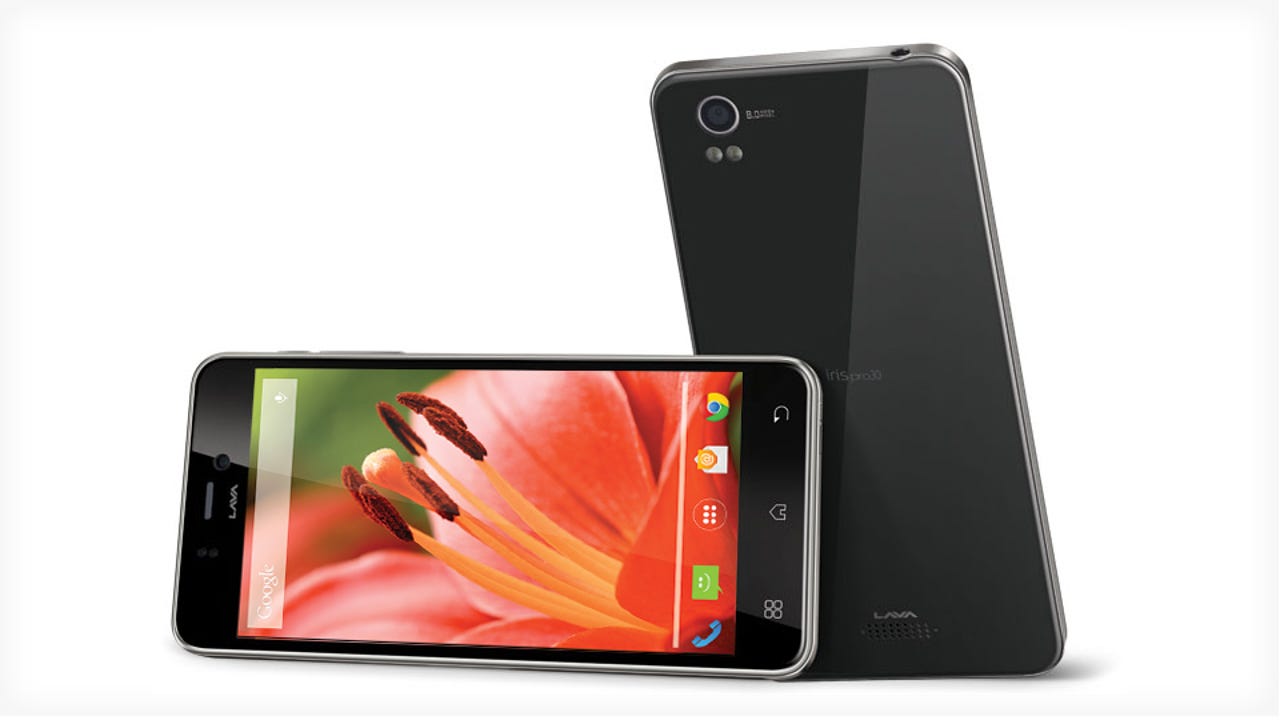India's Lava impresses with new phones as it fights for third place
Several days ago, the big buzz hogging the news feeds was Micromax's controversial besting of Samsung for the coveted number one spot in smartphone sales in India. But the real, unheralded sleeper hit amongst Indian smartphone makers could very well be Lava.
In recent days, Lava has unveiled a few phones in different segments of the market that have made both consumers and reviewers sit up and take notice: It unveiled one in the premium-budget segment, the Lava Iris Pro 30, priced at Rs 15,990 ($256); another in the budget-plus segment, the Lava Iris Fuel 60, at Rs 8,888 ($142); as well as one each in the budget (Iris Alfa, Rs 6,550, $105) and super-budget (Iris 465, Rs 4,499, $73) categories. This is quite a feat, and could be a significant one for the brand as it seeks climb up the rankings. Of devices sold in the previous quarter, 41 percent were priced between Rs 6,000 and Rs 12,000, while another 23 percent were represented by phones selling at less than $100 (Rs 6,200).

That's no longer the case. Lava recently unveiled a winner in the premium-budget smartphone category that Chinese phone company Xiaomi has recently dominated; namely, the Lava Iris Pro 30. Online reviewer Tech Firstpost said that it "looks and feels unlike anything Lava has produced so far" and is "easily the best looking and built handset, after the Lumia 720".
The phone doesn't dazzle in any one category, but instead more than satisfies in several. Its magnesium-alloy frame makes it rigid, yet light, its 720p display visually satisfies even hard-to-please users, and its 2000mAh battery allows it to last 60 percent longer than other phones in the same category, such as the Micromax Canvas Turbo. At Rs 15,990 ($256), Tech Firstpost described it as "easily one of the best phones in this segment, and is most certainly the best when it comes to design and ergonomics".
In a category below the Iris Pro 30 lies the Lava Iris Fuel 60, a medium-budget option at Rs 8,888 ($142). It's a somewhat bulky device thanks to its mega 4000mAh battery, which, after eight hours of rigorous use split between gaming, video streaming, talking, and audio streaming still had half the battery power left in the tank. The camera, despite the big sensor, may not stop you in your tracks, and it may not sweep you off your feet, but in terms of visual display (720p, Corning Gorilla Glass 3), lasting power, and bloatware-free software, reviewers think that there are few phones to be found that are as good a deal as this one.
These are the kind of phone launches that are steadily eating into giants like Samsung. According to Business Standard, Lava's market share shot up to 8 percent in the September quarter last year. Karbonn, another Indian brand that's also at 8 percent, along with Motorola (at 5 percent of the Indian market share), held steady.
Market share is a contentious topic. Micromax's triumph in finally outstripping Samsung in India by 2 percentage points (22 percent to 20 percent), according to research firm Canalysis, is strenuously discounted by the Korean giant, which said that its fourth-quarter share by volume was 34.3 percent compared to its value market share, at 35.8 percent. Cybex Exim Solutions, another firm that tracks only domestic phone vendors, revealed that Lava imported 1.9 million phones in the last quarter compared with Karbonn's 1.8 million, with Karbonn insisting that it is ahead of Lava according to its own metrics.
These oscillations and contentions of market share are destined to continue in a sizzling market where the only name of the game is new product launches with even more value-added phones being placed in consumers' hands. However, winning here could hinge on how well the device makers are able to synchronise R&D, production, testing, marketing, and product launches with the time intervals between these phases as short as possible.
In fact, according to The Economic Times, Lava will begin assembling its phones in its Noida plant as soon as April, churning out a potential 200,000 phones and ramping up to 1 million devices by 2016. This would be a pioneering local manufacturing effort by a domestic Indian phone brand today.
What makes Lava unique is not just its price-driven proposition; it is widely known for having its own easy-to-use and elegant user interface called Hive on the Android OS, which no other local brand has. But it shouldn't rest easy on its laurels. The world of smartphones is now chock-full with contenders who seem to roll out the hits on a daily basis -- Lenovo-Motorola, Asus, LG, Xiaomi, and Gionee come to mind -- and domestic stalwarts like Micromax and Karbonn are battling for every feature under every price point with aggressive marketing budgets bolstering these efforts.
For a cell phone maker, it is a furious, competitive, and debilitating, but potentially invigorating and immensely rewarding game to play, and Lava thinks it can do so with the immediate goal being the number three spot in the domestic sweepstakes.